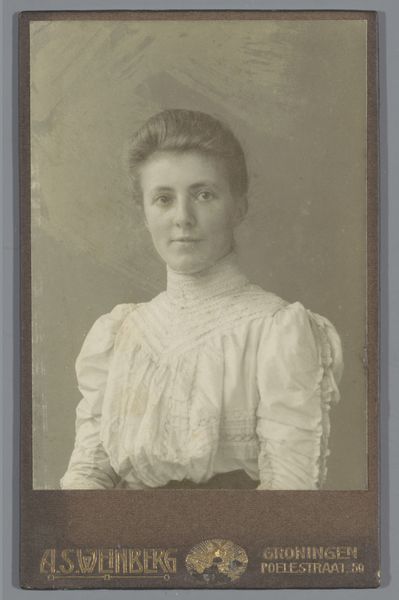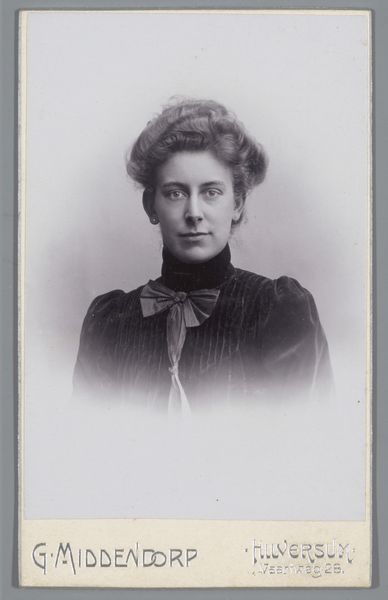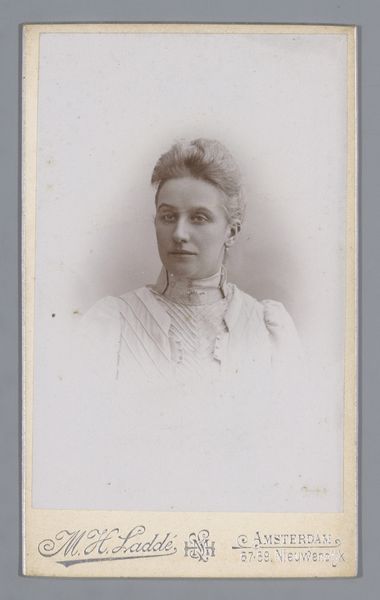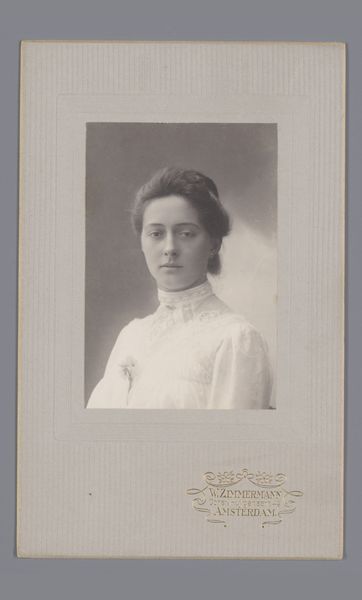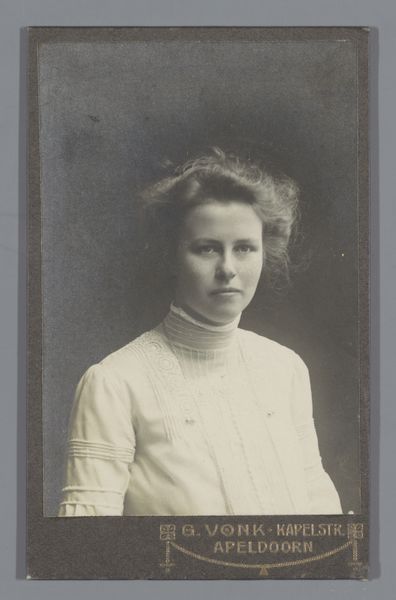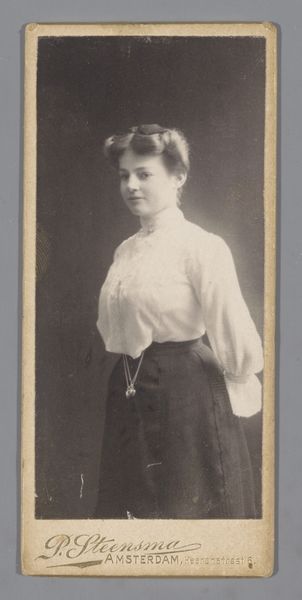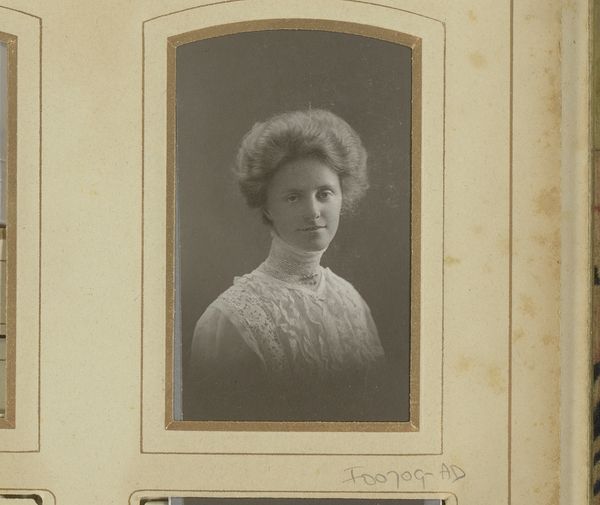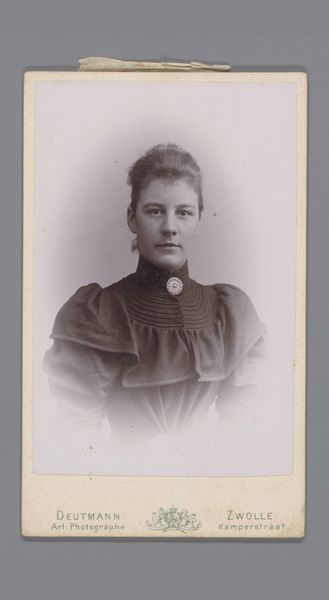
Dimensions: height 105 mm, width 65 mm
Copyright: Rijks Museum: Open Domain
Editor: Here we have a gelatin silver print titled "Portrait of an Unknown Woman" created sometime between 1895 and 1920 by Atelier Moderne. There is a melancholic and detached atmosphere that I find very striking. What do you see in this piece? Curator: What resonates with me most powerfully is the semiotics of display at work here. Look at how the very *type* of clothing she wears speaks to a particular historical moment and aspirational identity. The lace and delicate fabric signal, of course, the advent of industry allowing mass production, yet designed for a specific echelon of society. Editor: That’s interesting, I didn’t immediately pick up on that! So, the material has social and economic implications? Curator: Absolutely. Note also how photography itself performs a role. This isn’t merely a depiction; it’s a conscious construction of self, designed to communicate status, modernity, and perhaps even a hint of artistic sensibility via its 'impressionistic' soft focus. What message do you think *she* is hoping to convey to future viewers of this photographic object? Editor: Hmm, I suppose she’s performing the role of the 'modern woman,' aware of new artistic trends and signaling her position in society through these visual cues. Curator: Precisely! By understanding these embedded symbols, we understand not just this image, but how turn-of-the-century bourgeois identity was actively forged through deliberate symbolic messaging. Editor: This conversation gave me such a clearer sense of how social identity could be deliberately composed and framed through material choices in the late 19th and early 20th centuries. Thanks so much! Curator: It has given me something to consider as well – how persistent these codes of visual communication remain even now.
Comments
No comments
Be the first to comment and join the conversation on the ultimate creative platform.
